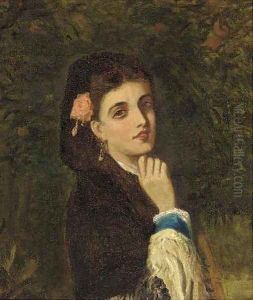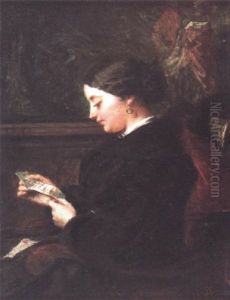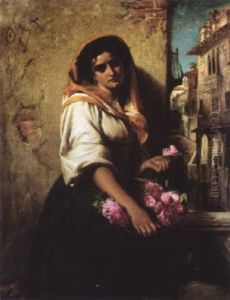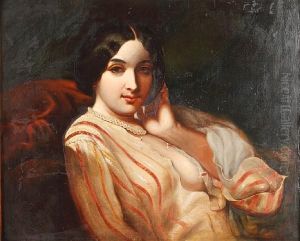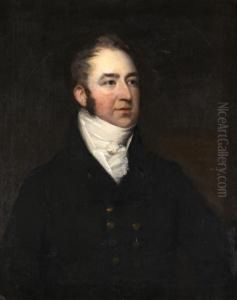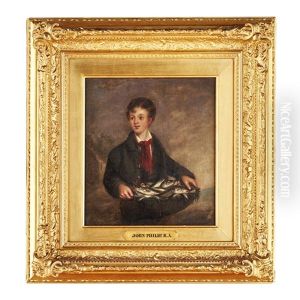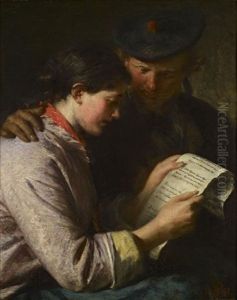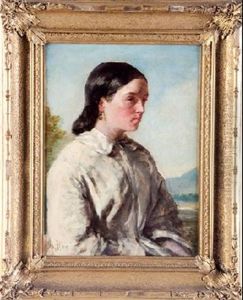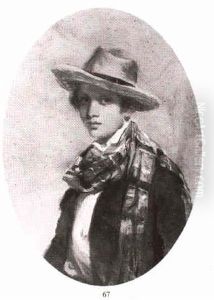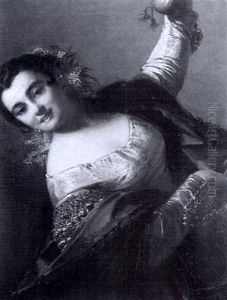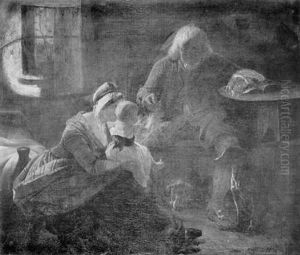John Philip Paintings
John Philip, known as 'Spanish Philip' due to his predilection for Spanish subjects in his artworks, was a notable British painter of the 19th century, born on April 19, 1817, in Aberdeen, Scotland. His early life was marked by a passion for art, which led him to pursue his artistic education at the Trustees’ Academy in Edinburgh under the tutelage of Sir William Allan. Allan's influence was pivotal in shaping Philip's initial artistic endeavors, which were primarily focused on historical and genre subjects.
Philip's artistic journey took a significant turn in 1837 when he moved to London, where he became associated with the circle of artists known as the Clique, a group opposed to the dominance of academic art and advocating for a more naturalistic portrayal of everyday life. However, it was his first trip to Spain in 1851 that dramatically transformed his artistic focus and style. Captivated by the Spanish culture, light, and people, Philip's subsequent works predominantly featured Spanish scenes, earning him the nickname 'Spanish Philip'. His ability to capture the vibrancy and warmth of Spanish life in his paintings garnered him considerable acclaim.
Throughout the 1850s and 1860s, Philip's reputation continued to grow, both in Britain and abroad. He was elected a member of the Royal Academy in 1859, a significant achievement that underscored his prominence in the British art scene. His works from this period are characterized by their vivid coloration, meticulous detail, and the lively portrayal of his subjects, often highlighting the traditional customs and everyday life of the Spanish people.
John Philip's health began to decline in the early 1860s, which led him to spend winters in Spain in hopes that the climate would be beneficial. Despite his health challenges, he continued to paint, producing some of his most memorable works during this time. Philip passed away on February 27, 1867, in London. His legacy is preserved in the collections of major museums and galleries, including the Tate Britain and the Royal Scottish Academy. Philip's contribution to the Victorian art scene, especially his unique representation of Spanish life and culture, remains a significant aspect of his enduring appeal and historical importance.
